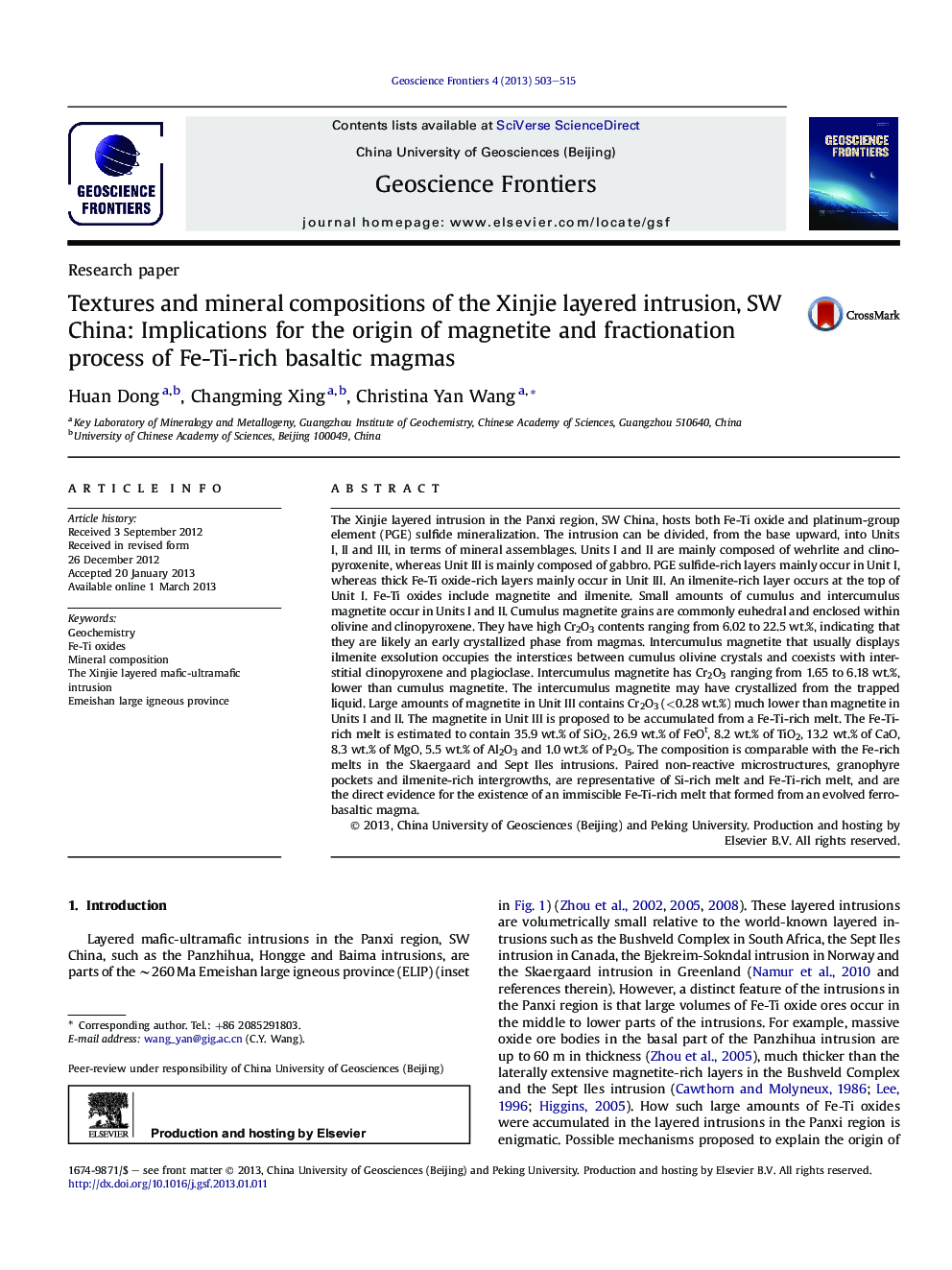| کد مقاله | کد نشریه | سال انتشار | مقاله انگلیسی | نسخه تمام متن |
|---|---|---|---|---|
| 4681703 | 1348868 | 2013 | 13 صفحه PDF | دانلود رایگان |

The Xinjie layered intrusion in the Panxi region, SW China, hosts both Fe-Ti oxide and platinum-group element (PGE) sulfide mineralization. The intrusion can be divided, from the base upward, into Units I, II and III, in terms of mineral assemblages. Units I and II are mainly composed of wehrlite and clinopyroxenite, whereas Unit III is mainly composed of gabbro. PGE sulfide-rich layers mainly occur in Unit I, whereas thick Fe-Ti oxide-rich layers mainly occur in Unit III. An ilmenite-rich layer occurs at the top of Unit I. Fe-Ti oxides include magnetite and ilmenite. Small amounts of cumulus and intercumulus magnetite occur in Units I and II. Cumulus magnetite grains are commonly euhedral and enclosed within olivine and clinopyroxene. They have high Cr2O3 contents ranging from 6.02 to 22.5 wt.%, indicating that they are likely an early crystallized phase from magmas. Intercumulus magnetite that usually displays ilmenite exsolution occupies the interstices between cumulus olivine crystals and coexists with interstitial clinopyroxene and plagioclase. Intercumulus magnetite has Cr2O3 ranging from 1.65 to 6.18 wt.%, lower than cumulus magnetite. The intercumulus magnetite may have crystallized from the trapped liquid. Large amounts of magnetite in Unit III contains Cr2O3 (<0.28 wt.%) much lower than magnetite in Units I and II. The magnetite in Unit III is proposed to be accumulated from a Fe-Ti-rich melt. The Fe-Ti-rich melt is estimated to contain 35.9 wt.% of SiO2, 26.9 wt.% of FeOt, 8.2 wt.% of TiO2, 13.2 wt.% of CaO, 8.3 wt.% of MgO, 5.5 wt.% of Al2O3 and 1.0 wt.% of P2O5. The composition is comparable with the Fe-rich melts in the Skaergaard and Sept Iles intrusions. Paired non-reactive microstructures, granophyre pockets and ilmenite-rich intergrowths, are representative of Si-rich melt and Fe-Ti-rich melt, and are the direct evidence for the existence of an immiscible Fe-Ti-rich melt that formed from an evolved ferro-basaltic magma.
Figure optionsDownload as PowerPoint slideHighlights
► Texture and mineral compositions of olivine and magnetite are present.
► The Xinjie intrusion formed from evolved Fe-Ti-rich basaltic magmas.
► Cr-poor magnetite in Unit III formed from immiscible Fe-Ti-rich melts.
Journal: Geoscience Frontiers - Volume 4, Issue 5, September 2013, Pages 503–515